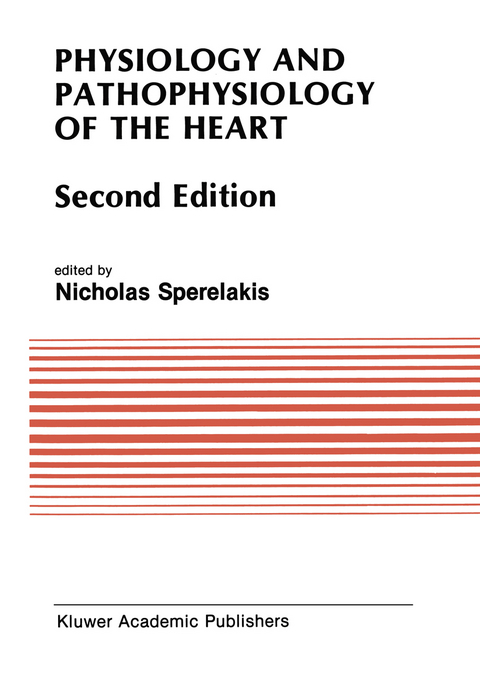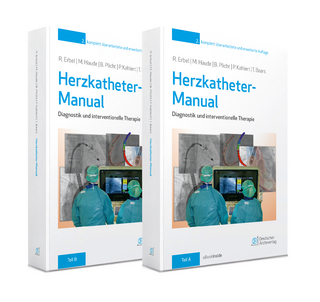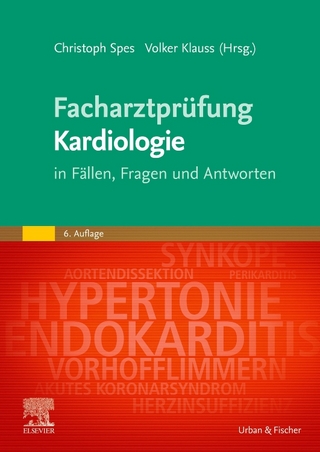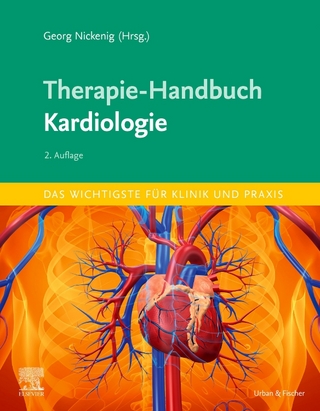
Physiology and Pathophysiology of the Heart
Kluwer Academic Publishers (Verlag)
978-0-89838-388-1 (ISBN)
- Titel z.Zt. nicht lieferbar
- Versandkostenfrei innerhalb Deutschlands
- Auch auf Rechnung
- Verfügbarkeit in der Filiale vor Ort prüfen
- Artikel merken
CARDIAC MUSCLE.- 1. Ultrastructure of Mammalian Cardiac Muscle.- 2. Basic Pathological Processes of the Heart: Relationship to Cardiomyopathies.- 3. Basis of the Resting Potential.- 4. Ionic Basis of Electrical Activity in the Heart.- 5. Role of Calcium-Activated Ion Currents in the Heart.- 6. Electrogenesis of the Pacemaker Potential as Revealed by Atrioventricular Nodal Experiments.- 7. A Matrical Perspective of Cardiac Excitability, Cable Properties, Impulse Propagation.- 8. The Electrocardiogram and Its Relationship to Excitation of the Heart.- 9. The Slow Action Potential and Properties of the Myocardial Slow Ca Channels.- 10. Excitation-Contraction Coupling: Relationship of Slow Inward Current to Contraction.- 11. Role of Na-Ca Exchange in Heart.- 12. Calculated Transsarcolemmal Calcium Movements in Cardiac Muscle.- 13. Uptake of Calcium by Sarcoplasmic Reticulum and Its Regulation and Functional Consequences.- 14. Control and Modulation of Contractile Activity of Cardiac Myofilaments.- 15. Contractile and Mechanical Properties of the Myocardium.- 16. Substrate and Energy Metabolism of the Heart.- 17. Autonomic Neural Control of Cardiac Function.- 18. Development of Postjunctional Cardiac Autonomic Receptors and their Regulation of Cardiac Function During Fetal and Neonatal Life.- 19. Developmental Changes in Alpha-Adrenergic Modulation of Cardiac Rhythm.- 20. Mechanisms of Adrenergic and Cholinergic Regulation of Myocardial Contractility.- 21. Pharmacology of Cardiac Glycosides.- 22. Effects of and the Mechanism of Action of Calcium Antagonists and Other Antianginal Agents.- 23. Cellular Electrophysiology and Ischemia.- 24. Mechanism of Action of Antiarrhythmic Drugs.- 25. Calcium and the Injured Cardiac Myocyte.- 26. Cell Coupling and Healing-Over in Cardiac Muscle.- 27. Action of Natural Toxins on Cardiac Ionic Channels.- 28. Cardiac Hypertrophy and Altered Cellular Electrical Activity of the Myocardium: Possible Electrophysiological Basis for Myocardial Contractility Changes.- 29. Developmental Changes in Membrane Electrical Properties of the Heart.- 30. Aging of the Adult Heart.- 31. Hormonal Effects on Cardiac Performance.- 32. Cardioplegia: Principles and Problems.- 33. Effects of the Volatile Anesthetic Agents on the Heart.- 34. Effects of Toxic Substances on the Heart.- II. CORONARY CIRCULATION.- 35. Vascular Smooth-Muscle Cells and Other Periendothelial Cells of Mammalian Heart.- 36. Pathogenesis of Coronary Atherosclerosis.- 37. Endothelial Cell Regulation of Vascular Smooth Muscle.- 38. Electrophysiology of Vascular Smooth Muscle.- 39. Electromechanical and Pharmacomechanical Coupling in Vascular Smooth Muscle.- 40. Cyclic Nucleotides and Protein Phosphorylation in Vascular Smooth-Muscle Relaxation.- 41. Vascular Muscle Membrane Properties in Hypertension.- 42. Contractile Proteins of Smooth Muscle.- Mechanical Properties and Regulation of Vascular Smooth-Muscle Contraction.- 44. Metabolism and Energetics of Vascular Smooth Muscle.- 45. Control of the Coronary Circulation.- 46. Extravascular Coronary Resistance.- 47. Myocardial Infarction.- 48. Inappropriate Coronary Vasomotion: Excessive Constriction and Insufficient Dilation.
| Erscheint lt. Verlag | 31.1.1989 |
|---|---|
| Reihe/Serie | Developments in Cardiovascular Medicine ; 90 |
| Zusatzinfo | 1040 p. |
| Sprache | englisch |
| Themenwelt | Medizinische Fachgebiete ► Innere Medizin ► Kardiologie / Angiologie |
| Studium ► 1. Studienabschnitt (Vorklinik) ► Physiologie | |
| ISBN-10 | 0-89838-388-9 / 0898383889 |
| ISBN-13 | 978-0-89838-388-1 / 9780898383881 |
| Zustand | Neuware |
| Informationen gemäß Produktsicherheitsverordnung (GPSR) | |
| Haben Sie eine Frage zum Produkt? |
aus dem Bereich


